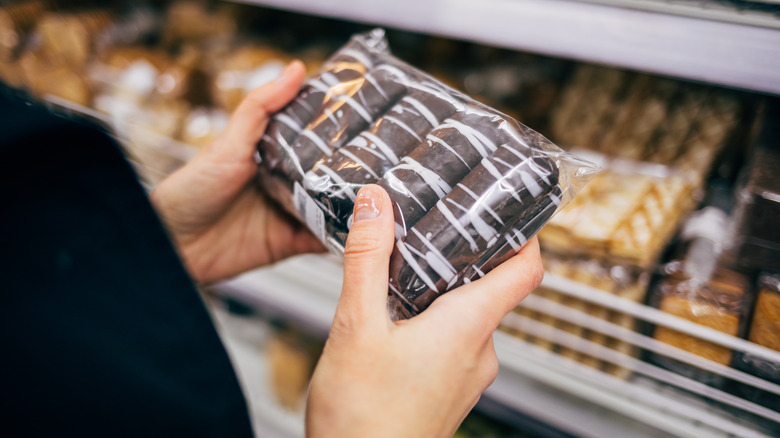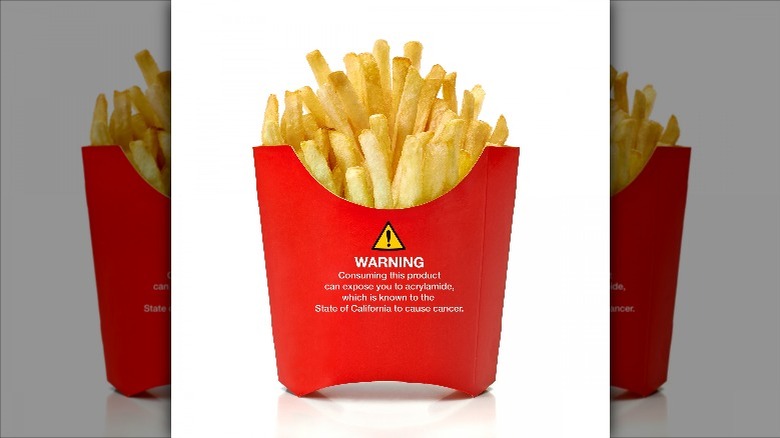The Real Reason California Has Lead Warnings On So Many Snacks
CORRECTION 7/27/22: A previous version of this article stated Proposition 65 warnings only share if a product has potentially harmful chemicals, not the amount it contains. While this is true, the warning label is not intended to be included on products with chemical levels below a certain amount, which the California Office of Environmental Health Hazard Assessment describes as "safe harbor levels."
The reason so many snacks in California have a lead warning is because of Proposition 65.
Proposition 65 is a direct ballot measure that requires companies to warn customers of chemicals that cause cancer, birth defects, and/or reproductive harm in their product via a warning label. The warning, according to the official government site for Prop 65, works as follows: "Consuming this product can expose you to chemicals including [name of one or more chemicals], which is [are] known to the State of California to cause cancer and birth defects or other reproductive harm." Other harmful additives found in food include bisphenol A (BPA), polycyclic aromatic hydrocarbons (PAHs), coumarin, and mercury (via Healthline).
The reason why lead in particular gets such flack is that a lot of Mexican-styled treats contain lead. In 2006, California turned its attention to reducing the amount of lead children consumed by eating Mexican treats that contain tamarind and chile powder (per SFGate). At the time, 75% of lead poisoning cases in California were among Latino children. Whether a certain product contained lead had less to do with the product and more to do with the factory that produced it or, in some cases, its wrapper.
However, that's not the only reason why you would find a lead warning. In May, The Takeout noticed a lead warning on Hello Kitty Green Tea Marshmallows. The issue was that the green tea flavor was made from genuine green tea that absorbs the lead from the land it grows.
Some say Prop 65 goes too far
The thing people might note, however, is that many consume green tea and chili powder without contracting lead poisoning. When The Takeout asked California's Office of Environmental Health Hazard Assessment whether the Hello Kitty treat was dangerous, the outlet learned Prop 65 only refers to the presence of dangerous chemicals above a certain threshold, not the amount. In a statement sent to Tasting Table, the California Office of Environmental Health Hazard Assessment explained it provides detailed information on its website so companies can stay below what it refers to as "safe harbor levels" and for consumers to stay informed about what risk the different chemicals pose.
Some may sympathize with the stance taken by California, though it has caused debate. Better Goods wrote in 2021 that people charged Prop 65 with desensitizing the public to genuine dangers by flagging every chemical, causing people to worry about individual products they buy instead of their general lifestyle, and added that the law only applies to companies with 10 or more employees. The government agency told Tasting Table it feels knowing these risks helps consumers make decisions that inform their long-term health.
The general consensus is Prop 65 does a reasonable job raising general awareness, but its effectiveness may be limited if you are not repeatedly consuming the same products and chemicals. So if you pick up a snack with a lead warning, you may want to go through the ingredients to see what necessitated the note before deciding to pass or if you're willing to take the risk.

